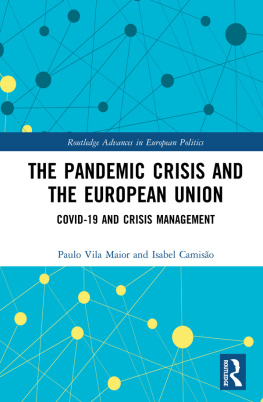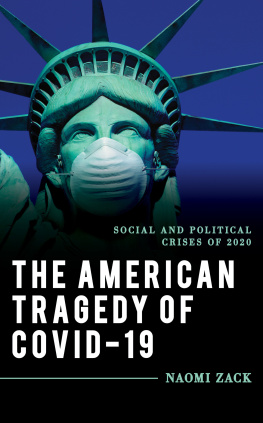THE YEAR TIME STOPPED . Copyright 2022 by Scopio Technologies, Inc. All rights reserved under
International and Pan-American Copyright Conventions. By payment of the required fees, you have
been granted the nonexclusive, nontransferable right to access and read the text of this e-book on-screen.
No part of this text may be reproduced, transmitted, downloaded, decompiled, reverse-engineered,
or stored in or introduced into any information storage and retrieval system, in any form or by any
means, whether electronic or mechanical, now known or hereafter invented, without the express
written permission of HarperCollins e-books.
HarperCollins books may be purchased for educational, business, or sales promotional use. For
information, please email the Special Markets Department at SPsales@harpercollins.com .
FIRST EDITION
Cover design: Morcos Key
Photograph on by F. Dilek Uyar
Photograph on by Marwan Shousher
Digital Edition JUNE 2022 ISBN: 978-0-06-315953-2
Version 04262022
Print ISBN: 978-0-06-315951-8
This book is about you, and it is also about all of us. You are looking at pivotal
moments that people around the world experienced in 2020moments from
lives that were completely uprooted. This is the year time stopped.
When someone captures a unique moment in time just right, it seems all too
familiar, even when you look at it with a strangers eyes. You may see yourself
in that image too. You see the gripping highs and lows, the loneliness, and the
togetherness.
We started an online platform called Scopio, with a clear vision in mind: to be a
home for photographers and artists of different identities and geographies to
tell unique stories through visual mediums like photography, illustrations, and
graphic art. There are important stories the world needs to hear and see on a
daily basis, and no one can tell those stories more authentically than the people
experiencing them.
Inspired by the social movements demanding justice from oppressive
systems in the 2010s, Scopio emerged as a platform to help people search
and find protest photos being shared on social media platforms. People
protesting for change were at the time equipped with new technologies such
as smartphones that connected them to new social platforms for sharing
their stories, and we created Scopio to aggregate all these images and make
them easy to find and use, with the consent of the photographer. Today, we
see widespread issues of representation in visual media. People of different
identities and from different parts of the world often dont see themselves in
the images around them. Creating a platform and safe haven where anyone,
anywhere can share their images instantly, and have those stories used by the
world, is where we wanted to make the biggest impact.
This book was a decade in the makingwe just didnt know it. The nature
of the platform weve created is part of the unique story of the pandemic,
a year when we could be so isolated yet so connected through our devices.
A platform like Scopio was positioned to connect everybody who has a
camera and wants to share their story. Pandemics of years past were so
different precisely because they lacked the advanced technologies to
document everyday experiences.
Weve gathered 200 photos from photographers everywhere, leading
different lives, that allow us to see, through the lenses of others, the common
emotion we all felt together through the year 2020, and all of the challenges
the pandemic threw at us.
Although peoples experiences through the pandemic have been vastly
different, based on their economic, racial, gender, and geographic contexts,
what we witnessed is a collective sense of limitation and confinement
throughout this year.
The images in this book tell the story of what it was like to live through the
first year of the COVID-19 pandemic. Its through sharing the stories that we
can begin to grasp the injustices faced by communities everywhere. What
happens when a global and highly connected society retreats into itself?
What happens when we are forced, like never before, to examine who we
are? To answer that, looking deeper into what exactly happened is key. So in
this book we will look deeply into the stories people were telling through their
images, highlighting 2020 in two parts:
Part 1 tells the story of finding ourselves more alone than we have ever
beenand many of us feeling this for the first time in our lives. The images
show changes in our lifestyles, emotions, and habits, and the personal
transformations many of us experienced.
Part 2 tells the story of our coming together, despite all the obstacles and
hardships. We come together out of necessity for survival, not out of the
luxury of choice. The images capture the authenticity of long-overdue
movements and protests, and the explosive energy that bubbled to the
surface.
Although seemingly opposite, these two human experiences are
fundamentally connected, and in fact part of the story of humanity. As we
faced a new reality of introversion and introspection, revealed in part 1, seeds
were planted and then grew rapidly into the connectedness and momentum
illustrated in part 2.
The images taken during this time are historic. The collection represents
a microcosm of our global world from its most privileged to its most
underserved populations and the injustices that naturally arise as a result.
The year 2020 uncovered a lot of deep-seated injustices that already existed
and proved to us that there is little that can stand in the way of peoples
demands for dignity and basic needs, not even a global pandemic.
Although all of us were forced into isolation, we were never truly
disconnected, in part because of the technology that helps us share our
experiences with one another. This book is dedicated to the individuals and
communities fighting for basic rights, and to the photographers and everyday
people who captured these historic moments.
CHRISTINA AND NOUR,
COFOUNDERS OF SCOPIO
Although it was not the same for everyone, we all experienced some type
of isolation in 2020. When the COVID-19 pandemic hit, everyday life as we
knew it was completely transformed.
The images included in this part show the fear, the hesitation, even the
excitement that this new way of life ushered in. They tell of mass hysteria at
grocery stores, as we stockpiled enough food to feed our families, preparing
for the worst. They tell the story of the hospitals that were overwhelmed
and the healthcare workers who turned into unlikely heroes. A lot of us had
to say goodbye to our loved ones over a video call, as they died alone in the
hospital. Some of the stories told were of creativity in a time of isolation.
Many couples found themselves having Zoom weddings when they had
initially planned to see hundreds of guests congratulate them in person. A
lot of us picked up new hobbies at home and discovered interests we never
knew we had as we felt more and more alone in our journeys.
These images are snapshots of inner workings. What was going on inside
peoples heads? The collective trauma being experienced took its hold in
unique ways. People showed their care for their loved ones in new ways.
They mourned and grieved for those lost as well as for the lives they were
missing out on.
The images that came pouring in from all around the world showed the
array of locations, ages, genders, races, and classes that illustrated the
vastness of the human experience. Although we were all far apart from one
another, miraculously people found ways to stay more connected than ever.












